By Suraj A. Vyas | 30 min read
Don’t let Non-Fungible Tokens (NFTs) intimidate you. This blog post is (probably) for you. Regardless of whether you understand how NFTs work or whether you’re an attorney who can barely handle legal e-filing platforms or whether you’re trying to learn about NFT basics or whether your only NFT touchstone is that they are a plague on the environment (which is mostly true). A major exception: This blog isn’t for you if you’re looking for any sort of financial or legal advice. That’s not what this is at all.
The legal world moves SO slowly and this is certainly a (currently) niche topic. BUT! I’m so interested in the technology and contract law issues that arise from NFTs that I had to share them with you all.
Before diving headfirst into this topic, I do want to set up some foundational NFT knowledge so that those of you who are less up-to-date on NFTs can still follow along and we can make sure we’re all on the same page when discussing the legal issues. If you’re already an expert, feel free to scroll down to the “Hi” image. It’s way down there.
Ready? Okay, let’s go! We’re going to start a bit dry with definitions, but I’m an attorney…so what did you expect? We love definitions!
NFT=Non-fungible token. The most common ones you’ve probably seen are the Bored Ape Yacht Club NFTs (the cartoon monkey pictures online)
Non-fungible=noninterchangeable
Interchangeable (aka fungible)=I can exchange something for something else and it doesn’t really lose any intrinsic value. For example: Dollars bills. I can give you a $20 bill and you can give me a $20 bill and neither of us would really care. Sure, they may have different serial numbers or one may have a slight rip or maybe one has a permanent marker on it. As long as they can still be exchanged for a few Mexican Pizzas, no one cares. The opposite of this could be my watch. I could give you my watch and you could give me your watch (let’s assume they’re the same watch model), but they have different values. The watch I own was given to me by my wife when I graduated from law school. It has meaning and value to me and is not interchangeable with your watch (even if your watch was also given to you by your wife after you graduated from law school).
Okay, so an NFT is something that isn’t interchangeable basically. Why all this crypto blockchain talk? Well, I’m so glad you asked. NFTs are stored on blockchains. Let’s define that now.
A blockchain is essentially a ledger. Except it’s a special kind of ledger. What makes it special is that it cannot be tampered with because all transactions are recorded in “blocks” of computer code and are time-stamped and linked together. Let’s talk about the two most common blockchains you’ve probably heard about: Bitcoin blockchain and Ethereum blockchain.
The Bitcoin blockchain is just that. It’s a blockchain used to store transactions related to cryptocurrency. NFTs are not cryptocurrency. We know this because currency, as explained above through the Mexican Pizza example, is fungible. Bitcoin is also fungible. The Bitcoin you own is basically the same as the Bitcoin your neighbor may own. They have the same value and can be interchanged and neither of you would really care. So, NFTs aren’t stored on the bitcoin blockchain.
Let’s move to the Ethereum blockchain. The Ethereum blockchain (unlike the Bitcoin blockchain) is programmable, meaning it’s more customizable. So you can write programs that, for example, could create a new cryptocurrency OR create NFTs. Rather than the program running on your computer (which may be what you’re used to), the program actually runs on the blockchain itself. Remember, a blockchain is a ledger you can’t tamper with so once a program is on the blockchain, it’s there forever (outside of some pretty crazy things happening).
Next definition: A smart contract is a self-executing contract with the terms of the agreement directly written into lines of code (when they abide by a standard known as ERC721). The code and the agreements contained therein exist over a decentralized network and exist as a decentralized autonomous organization (DAO) whose members can vote on proposals and make changes to the organization's rules and operations through a consensus mechanism. Smart contracts allow for the automation of a digital contract, allowing for execution when certain conditions are met. They are often used in blockchain technology and cryptocurrencies. Smart contracts are also used to create NFTs. Remember: Smart contracts have nothing to do with contract law. They just enforce the transactional rules on the blockchain when whatever assigned conditions are met (so people just call them smart contracts).
An example of an NFT could be tickets to a legal symposium. You could mint (aka create) NFTs which would act as tickets for the legal symposium. Here you are thinking you’re helping because a physical ticket mailed out to people could be lost, burned, copied, etc. An electronic ticket sent to their email could be deleted, hacked, destroyed, etc. An NFT is nonfungible so it can’t be copied. It exists on the blockchain so it can’t be deleted. There’s no fraud really because you can prove that you’re the one who bought the ticket (ownership is conferred through public and private keys assigned to you, but we’re getting too into the weeds now). So, the NFT ticket is better…except it does take a lot of energy and so you’re really causing a lot of harm to the environment for only a little benefit. I mean, how often are people deleting tickets in their email to a point where they can’t just get a copy from their booking website?
PSA: Don’t ever share your private key with someone.
Another example that could be great (in theory) is titling in the worlds of real estate and automobiles. Rather than worrying about titles to these things, a blockchain could simply keep tabs on the buying and selling. However, what happens if the house burns down or gets flooded or a car gets stolen and scrapped? How do you rectify that in the blockchain? There is no concrete solution, but the steps to take would likely mirror something like:
Report the incident to relevant parties (local government, insurance company, etc.)
Verify the incident with an inspection, an assessment of the damage, etc.
Update the records on the blockchain (perhaps by transferring the title of the property from the current owner to the insurance company).
Notify all parties like the current owner, the insurance company, etc.
Validate the updated records to ensure that they are accurate and that all parties involved agree to the changes (possibly through a vote or a consensus process to confirm the changes on the blockchain).
In this way, an NFT is like a contract between two people. One person says the NFT is a ticket or artwork or something that entitles you to revenue based on something else (think musicians getting royalties on their songs).
Okay, now that we’ve got the basic terminology out of the way, how do people buy NFTs?
Well, it’s the same way we buy anything else. Just regular fungible currency (like a dollar bill). You can go on a website and PayPal someone $10 and they will send you the NFT…or at least, you have to trust that they’ll send you an NFT. That’s where the Smart Contracts come in. The point of crypto is that it doesn’t require trust. You could simply write an escrow Smart Contract program to the Ethereum blockchain. Then you could be confident that the NFT transferred to that escrow contract won’t be transferred to anyone else AND it won’t be transferred to the Buyer until the Buyer pays the Seller directly through Ethereum on the blockchain. It’s super foolproof and (in these basic examples) does away with traditional legal contracts.
The majority of NFTs (or at least what’s disseminated into the public sphere) are digital art pieces, but you need to know exactly how art works as an NFT. Adding data to the blockchain is expensive. Adding an image (like a .jpg) compared to a string of text (like your public key) would be extremely expensive. So, you wouldn’t put an image on the blockchain (especially because that would make it publicly viewable too since it would be on the ledger forever).
A quick legal side note: Keep in mind, you don’t usually own the copyright for the art (even when you buy it physically in the “real world”). You just bought the rights to look at or display the art. It’s like “buying” a song. You don’t own the song. You actually just bought a license to listen to it. Similarly, you also can’t just mint an NFT if you don’t own the rights to the reference material. Even if there is no direct case law on this, NFTs don’t just get to circumvent established legal principles of intellectual property law. Some NFTs may include the right to display or reproduce the art, while others may not.
What does it mean to own an “NFT of X?”
This means that on the blockchain there is a URI (kind of like the blockchain version of a URL, but not exactly) that is cryptographically assigned to your public address AND that URI points directly to the image of X (or a text file that will take you to X) on the open, public internet. When you buy an NFT, a new line on the ledger is added assigning the NFT to you and that means that you are now the only person who can write a line and add to that ledger (meaning you are the only person who can now transfer that NFT). So, you’re not buying the art. You’re not buying an “NFT of the art.” You are buying a unique location (or NFT) that points to the location of the artwork on the open (and publicly hosted) internet. Although the NFT itself is unique and can't be replicated, the underlying digital art is not unique, it can be copied and distributed. This means that while the NFT owner has the right to proof of ownership, it doesn't mean they own the rights to the digital work. To spell it out plainly, if it’s on the open internet, that means anyone could download this artwork.
This is observable by you if you go ahead and download the entire Ethereum blockchain (or use a website that lets you search it). You can look for some NFT artwork and find that you’re able to download it onto your device pretty easily. When you buy an NFT, you own control over a string of digits on the blockchain. Nothing more.
So, then why do people buy NFTs?
People buy NFTs for tons of different reasons. Some use it for investment or collecting and owning unique digital items such as artwork, virtual real estate, or in-game items while others may use it as a way to establish proof of ownership for digital assets. Additionally, creators may use NFTs to monetize their content. Buying NFTs can be seen as a way to own a piece of digital history, as it records the ownership and transaction history of that particular NFT on the blockchain. This creates a new way to own and trade digital collectibles, artworks, music, videos, and other forms of digital assets.
Many are looking at them as get-rich-quick schemes, but ignoring those people, I guess it mostly comes down to something similar to owning an autograph. I’m not an art fan, but I understand the concept of wanting to own an “original Andy Warhol” versus me printing out an Andy Warhol and then signing my name on it. There are also NFTs that act almost like digital trading cards.
Quick legal note: Obviously there are a ton of other legal issues that would arise from me printing an Andy Warhol and then trying to sell it. Also, you still need to abide by copyright when minting NFTs.
Are NFTs securities?
The SEC has not classified all NFTs outright as securities, but some of them seem to definitely pass the test (and will trigger many regulatory issues). An increase in value alone does not just make something a security. However, when an NFT is used to control royalty payments to a musician who hasn’t created the song yet, then you may have a security issue. SCOTUS has a test for whether something is deemed to be a security (SEC v. W.J. Howey Co.). The most applicable one may be an investment contract which is when a person invests his money in a common enterprise and is led to expect profits solely from the efforts of the promoter or a third party. There is no firm answer to this yet.
Securities are financial assets that can be traded and have an intrinsic value based on an underlying investment. As such, NFTs that are used to invest in an asset (like real estate or company stock), could be securities. On the other hand, NFTs used as a way to collect and own unique digital items (like artwork or in-game items) would likely not be securities because they don’t have an intrinsic value based on an underlying investment. Regulators around the world are still figuring out how to regulate NFTs, so there’s no “right answer.” If an NFT is considered a security, then it would be subject to the same laws and regulations as other securities. This would include registration requirements with the SEC and compliance with securities laws like the Securities Act of 1933 and the Securities Exchange Act of 1934.
Are NFTs taxed?
The tax treatment of NFTs is still an evolving area, and the rules can vary depending on the specific characteristics and use of the NFT, as well as the jurisdiction. In general, NFTs that are considered property for tax purposes may be subject to state and federal taxes.
For example, if an NFT represents an ownership interest in real property, it may be subject to property tax. If an NFT represents a capital asset (like a work of art), it may be subject to capital gains tax when it is sold. If an NFT is considered a collectible, it may be subject to a collectible tax on any gain when the NFTs sold. If an NFT is considered tangible personal property, it may be subject to state sales tax wherever it’s sold. Obviously, this isn’t tax advice and I’m not your attorney or accountant so make sure to consult your attorney and accountant before taking any steps based on what you might read in this blog post.
Hi! If you read through everything above, congratulations on sticking around. If you scrolled down to this, what are we waiting for? Let’s jump in!
The Doctrine of Privity of Contract
In US contract law, privity of contract refers to the relationship between the parties who are a part of a legally binding agreement. A contract creates legally binding obligations and rights only between the parties who are a party to the contract, and privity of contract ensures that only those parties are bound by the terms of the contract. This means that only the parties who have signed the contract are privy to the contract and can enforce the rights and obligations under the contract, and also can be held liable for a breach of contract. Third parties, who are not a party to the contract, cannot enforce the contract or be held liable for a breach of contract. There are some exceptions to privity of contract (like third party beneficiaries, assignment of contract, and novation). These exceptions allow certain third parties to enforce the contract or be bound by the terms of the contract. In summary, privity of contract is the principle that only the parties who have entered into a contract are bound by the terms of the contract and have the right to enforce it.
The main legal issue with NFT usage is the doctrine of privity of contract. When Buyer 1 buys an NFT from the original minter (“Seller”), Buyer 1 may also be buying a “real world” benefit, such as access to a private golf club. However, when Buyer 1 sells the NFT to Buyer 2, Seller could easily just change their mind and cut off Buyer 2’s access to the private golf club. Seller could do this because Seller has no privity of contract with Buyer 2.
If there are no terms and conditions, then you aren’t legally protected (at least not right now…remember, the law is SO slow at adapting to technology). You “bought” a hyperlink for all intents and purposes. The thing is: You can’t “own” a hyperlink either.
NFTs could provide terms and conditions, but they still wouldn’t be linked to the NFT itself when the NFT is sold. You could put the terms in a reference work held off-chain, but that’s also not connected to the NFT itself and could even change over time. There’s not even a guarantee that Buyer 2 would have read those terms, let alone consented to them. This would get even harder to prove with Buyers 3, 4, 5, and 2384. Smart Contracts aren’t actually contracts and they don’t bind future purchasers. They can break over time too because no legal rights are actually created. It’s not likely that the programmer of the Smart Contract thought of every single contingency when they wrote the code for the Smart Contract. It’s also a program that’s written by a programmer. It’s not exempt from human error or corruption.
Even if you put a contract on a website that sells NFTs…what if no one’s reading it? The law protects consumers against contracts of adhesion and clickthrough agreements and you’d have major enforceability issues surrounding privity of contract since you can’t really be sure that consumers are affirmatively consenting to the contract terms. Being unable to prove that a privity of contract exists could hurt both the Buyer and Seller, especially in instances of the NFT granting access to off-chain perks like in our golf club example above.
How does a future NFT Buyer ensure that they are able to enforce all terms against the original minter and previous Buyers?
As a downstream NFT purchaser, it can be challenging to enforce terms against the original minter and previous purchasers. They can protect themselves by taking certain steps, but there is no guarantee. Possible options may be:
Review the terms of the NFT before purchasing: Before purchasing an NFT, review the terms of the NFT and the smart contract that governs it to make sure the rights and obligations of all parties are clearly defined.
Verify the authenticity of the NFT: Before purchasing an NFT, verify that it is authentic and that the link to the reference material is intact and take this one step further by looking into the reputation of the original minter and previous purchasers.
Purchase from a reputable marketplace: Find one that has clear terms and conditions, dispute resolution mechanisms, and regulations in place to protect the rights of the buyers.
It's important to note that the enforceability of the terms of the NFT may also depend on the jurisdiction in which the purchase took place and the specific circumstances of the case. This same issue could present itself in the reverse with Sellers.
The Doctrine of First Sale
Most NFT art doesn’t give you the copyright to the art. It usually just gives you a license (even if it’s an expansive one). For many of them, the license is held off-chain and you may not even know about it. Lots of NFT art is also AI-generated (likely even the Bored Ape NFTs), which means there is no copyright at all (The Supreme Court of the United States declared in Naruto v. Slater that only humans can create art that has copyright). The problem even if there is a copyright is that if the item is fully digital and you have no physical good, you really have nothing protectable. Normally, when you buy a physical good, you can do (almost) anything you want with it including selling it to someone else (you probably can’t reproduce an image of it and sell it to someone else though). With an NFT, you don’t even have the ability to do that because there is no physical object. From a consumer protection standpoint, there is a strong argument that NFTs need to be regulated because it’s unlikely that Buyers (and even Sellers sometimes) understand what exactly is being sold. If the original minter and future sellers are not establishing clear terms and conditions (and making sure that all buyers are seeing the T&Cs) while also using commercial speech, you’re going to run into a legal nightmare.
What if the reference work/URI is changed (even if pointing to the IPFS file)? Who would be held liable? Theoretically, the creator or owner of the NFT should be responsible for ensuring that the link between the NFT and the reference material remains intact. However, it is also important for the buyer of the NFT to verify the authenticity of the reference material and the link before making a purchase (it’s not clear from the blockchain that the NFT is functioning so you’d have to investigate off-chain). In case of any issue with the link, the buyer could contact the creator or owner to resolve the issue. Additionally, if the NFT is being sold on a marketplace, that platform may have policies in place to address issues with broken links. What if the buyer can’t contact the original minter or seller? If the buyer is unable to contact the original creator or owner of the NFT, they may not be able to resolve the issue of a broken link. This could result in the NFT losing value or becoming worthless if the reference material can no longer be accessed or verified.
In some cases, the buyer may be able to seek compensation from the marketplace where the NFT was purchased if it was advertised or represented as being linked to certain reference material and that link is broken. However, this would depend on the specific terms and conditions of the marketplace and the laws of the jurisdiction in which the purchase took place.
Some NFT marketplaces provide a secondary market for the resale of NFTs, so the buyer may try to resell the NFT on the secondary market, however, the value of the NFT would likely be less than the original purchase price.
What if it’s an NFT providing a division of revenue streams and royalties (which only work if the blockchain is working) and then the blockchain forks? This could have a significant impact on the value and functionality of the NFT.
A fork in a blockchain network occurs when there is a split in the network. This makes it so there are two separate “versions” of the blockchain with different rules. This happens when a significant number of users decide to adopt a new version of the software.
It’s always important for creators and certain NFT holders to monitor any signs of forking. As an example: If an NFT is providing a division of revenue streams and royalties, it’s likely that the NFT is utilizing smart contracts to manage and distribute revenue streams. If the blockchain forks, the smart contracts built on the original blockchain might not be compatible with the new blockchain. This could be disastrous because the division of revenue streams may not be able to be executed. As such, the value of the NFT might decrease. If the NFT is also locked into one of the forked chains, it could make it even harder for the owner to access it.
Cases involving NFTs have not led to any huge legal revelations (yet). Courts are simply implementing centuries-old legal principles surrounding intellectual property to this new technology.
Fraud
Since blockchain is pseudo-anonymous, people can mint NFTs and then make “fake” accounts to make it look like their NFT is heavily appreciating in value over time to con a downstream purchaser looking to make a purchase to sell later for a higher amount. This could be seen as anti-competitive behavior under the Sherman Act and lead to civil AND criminal penalties. Just look at recent examples like ETHMAX where tons of celebrities are being sued for fraud and unjust enrichment for things they may not even have been aware of.
Another aspect is proving you have the rights to mint an NFT. It would be so difficult (even off-chain) to track down whether the original minter of an NFT had the appropriate rights to mint an NFT of a certain work. Sometimes, this may not even be as overt as my neighbor trying to mint an NFT of Spider-Man. It could be something more complicated like Disney/Marvel wanting to mint an NFT of a still from Sony’s Spider-Man film. Regardless of who would own the rights to mint such an NFT, the point is that the NFT itself would not provide that answer.
Now, what about the example of poorly drafted terms and conditions? Going back to the privity of contract example involving a private golf club: What if now the NFT provided access to a person (like a famous celebrity who is selling an NFT that lets the buyer hang out with them for a day)? If the NFT is sold, does the celebrity now have the hang out with the new Buyer? Maybe. If they don’t, then it could be a breach of contract or fraud.
Right of Publicity
The right of publicity is a legal right that gives a person the exclusive right to control the commercial use of their likeness. This includes the right to prevent others from using their image, name, or likeness for commercial gain without their consent. If a person's likeness is used in an NFT without their consent, it could be considered a violation of their right of publicity, and they may have a legal claim against the person or entity that created or sold the NFT. This applies to both celebrities and non-celebrities alike, but infringement can depend on the state law and circumstances surrounding the NFT. This could also tie into trademark violation is you’re selling an NFT that infringes on a trademark.
Right to Repair
This idea comes from a super specific example involving Alfa Romeo. Fun fact: A midterm for a class in my senior year of high school had us write a short story about ourselves and I remember mentioning that I drove an Albicant 2029 Alfa Romeo 8C Spider. Anyways, Alfa Romeo has an idea now that says when you take your car to get serviced, there will be a history on the blockchain to show what service was done and when to that car. This follows the car. The issue is: What happens when you take your car to a nonauthorized mechanic? Most likely, the information from that visit won’t make it onto the Alfa Romeo blockchain. In the future, you could be forced to only use Alfa Romeo’s authorized dealers. It’s like DRM for a car. You can’t ever take it to another service place. Even your right to repair may be infringed upon.
tl;dr Web 3.0 isn’t there yet. There is certainly cool technology behind NFTs, but they aren’t vastly improving anyone’s life right now. That, along with the damage to the environment, mean NFTs could simply disappear overnight.
Learn more about this topic and get in touch with The Law Offices of Suraj A. Vyas through social media @SAVLawFirm















